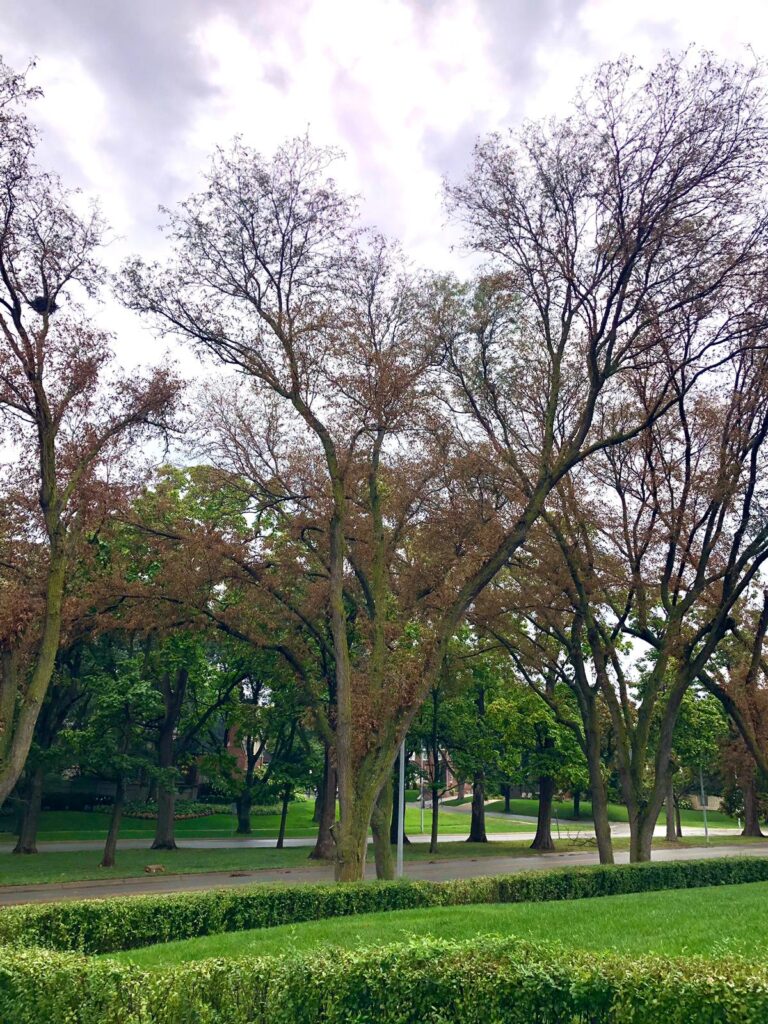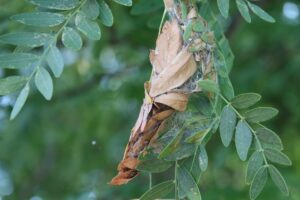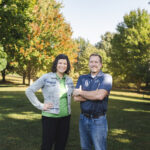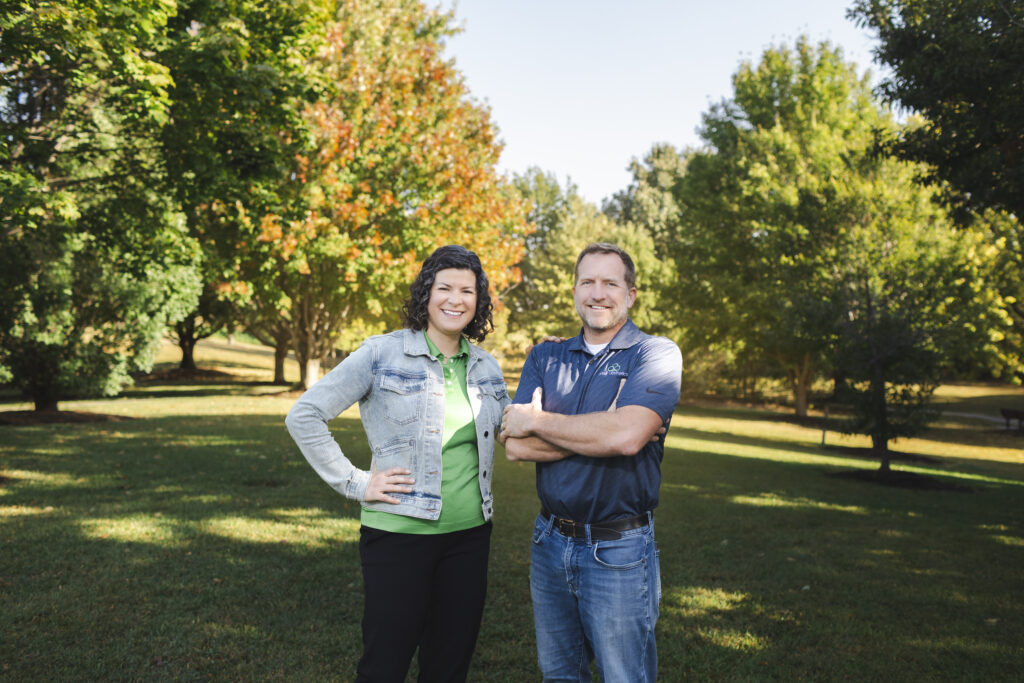Mimosa Webworm
If you’ve noticed browning clusters of leaves on your honeylocust or mimosa trees, wrapped in messy webs, you may be dealing with mimosa webworm. These web-building caterpillars feed on foliage, causing the tree to appear scorched from midsummer through fall.
What seems to be an emerging pattern here in Omaha is that we’re seeing not two, but three generations of mimosa webworm emerging in a single season. This extended pressure means damage can be more severe, and timing treatments is more important than ever.



What trees are at risk for Mimosa Webworm?
- Honeylocust (most commonly)
- Mimosa
How is Mimosa Webworm treated?
We apply an insecticidal foliar spray to the canopy of the tree at high pressure to penetrate the protective webs and reach the caterpillars inside.
Because multiple generations are emerging, more than one treatment may be necessary during the growing season to provide meaningful control.
We also offer soil injection treatments for larger trees or for situations were foliar sprays are not offering enough protection or when sprays are not possible.
What should I expect?
It’s important to note that tree care is not an exact science. While these treatments are effective at reducing populations, nature is unpredictable. Weather, timing, and the severity of infestations all play a role. Our goal is to minimize damage and help maintain your tree’s long-term health — not perfection.
How can I prevent Mimosa Webworm next year?
We recommend a two- or three-spray series, depending on seasonal conditions:
-
- First spray in June: targets the earliest generation, before webs are fully formed.
-
- Second spray in July/August: suppresses the larger mid-season generation.
-
- Third spray (as needed) in late August/September: addresses the newly emerging third generation we’ve observed in recent years.
Starting early gives your trees the best chance to stay healthy and vibrant throughout the season. Consult with one of our Certified Arborists for a custom-tailored plan for best control.






